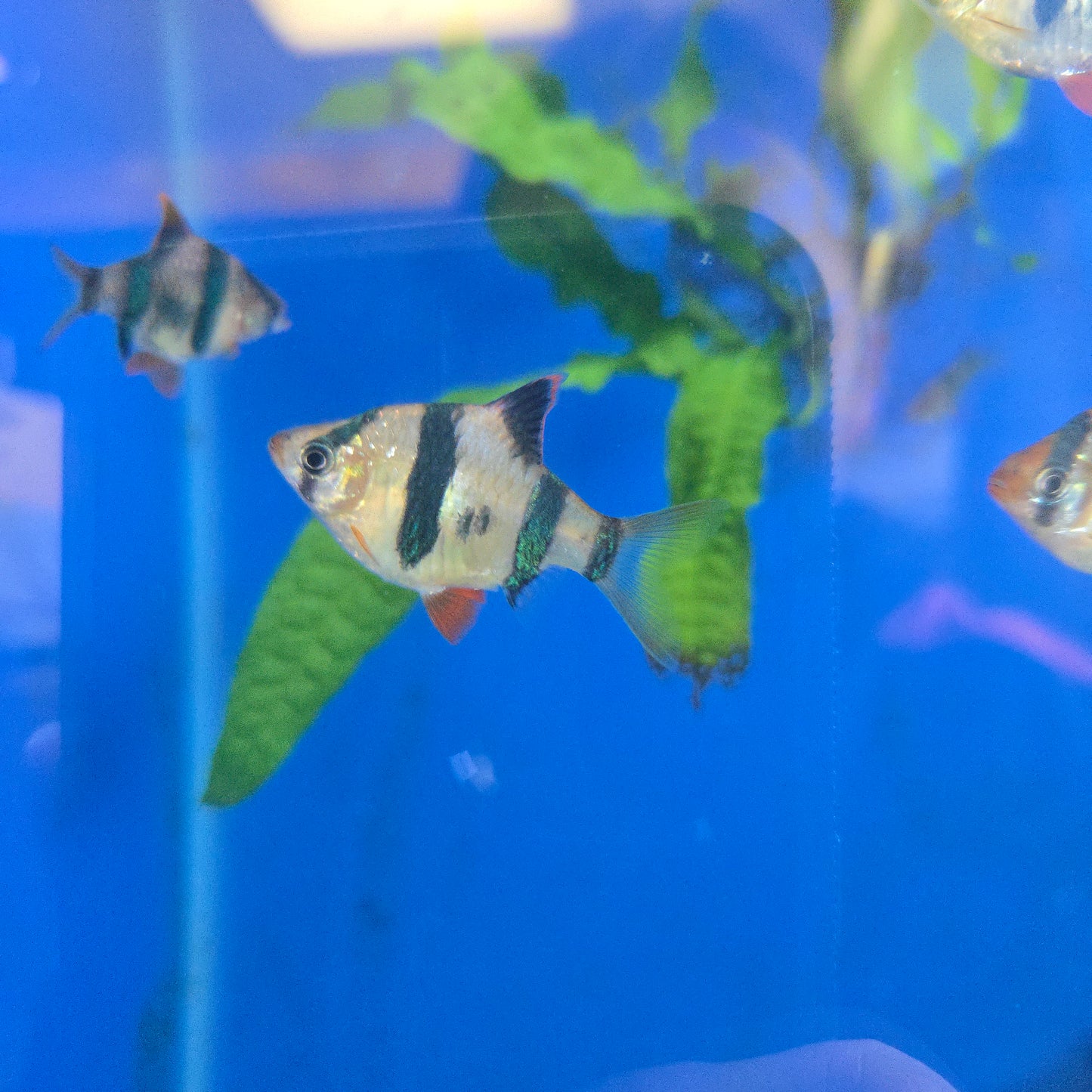Fancy Fish and Aquascapes
Tiger Barb ~ Puntigrus tetrazona
Tiger Barb ~ Puntigrus tetrazona
Couldn't load pickup availability
The Tiger Barb is a lively, colorful freshwater fish known for its striking black vertical stripes, bright orange fins, and metallic sheen. Native to the streams and rivers of Sumatra and Borneo, this energetic species is a popular choice for community tanks due to its active nature and eye-catching appearance.
Size: 2-3 inches
Lifespan: 5-7 years
Temperament: Semi-aggressive, playful
Group/Solitary: Best kept in groups of 6 or more
Food: Omnivorous; high-quality flakes, pellets, live/frozen foods (bloodworms, brine shrimp, daphnia)
Water Requirements: 74-80°F, pH 6.0-7.5, soft to moderately hard water
Care Instructions
Tiger Barbs thrive in well-maintained aquariums with a sandy or fine gravel substrate and plenty of open swimming space. A tank of at least 20 gallons is ideal for a small group. Adding driftwood, smooth rocks, and live plants creates hiding spots and helps reduce aggression within the group.
Tiger Barbs are schooling fish and should be kept in groups of six or more. Keeping them in larger groups helps distribute aggression and reduces the likelihood of fin-nipping, a common behavior when they feel stressed or outnumbered.
They have a hearty appetite and should be fed a varied diet of high-quality flakes or pellets, supplemented with live or frozen foods such as bloodworms, brine shrimp, and daphnia. Feeding small amounts twice a day supports their active metabolism and keeps their colors vibrant.
Tiger Barbs are best suited for community tanks with other fast-moving or similarly sized fish, such as danios, rasboras, and loaches. Avoid housing them with slow-moving or long-finned species like bettas or angelfish, as Tiger Barbs have a tendency to nip at flowing fins.
Fun Fact: Tiger Barbs communicate with each other using subtle body movements and changes in coloration, especially during breeding and social interactions.
Share


